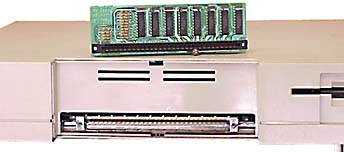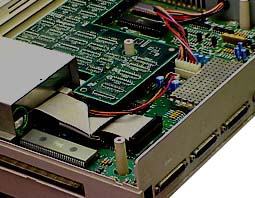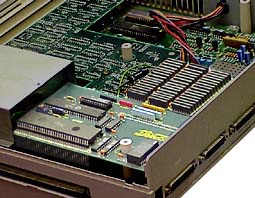| Amiga 1000 | 1985 | 68000 @ 7.14 MHz | OCS chipset | 16 colors at 640 x 400 **
32 colors at 320 x 200 # | desktop, 512K RAM, no internal hard drive |
| Amiga 500 | 1987 | 68000 @ 7.14 MHz | OCS chipset | 16 colors at 640 x 400 **
32 colors at 320 x 200 # | "wedge", 512K RAM, no internal hard drive |
| Amiga 2000 | 1987 | 68000 @ 7.14 MHz | OCS chipset | 16 colors at 640 x 400 **
32 colors at 320 x 200 # | Desktop, 512K RAM, 7 internal expansion slots |
| Amiga 3000 | 1990 | 68030 @ 16 or 25 MHz | ECS chipset | 4 colors at 1280 x 400 **
32 colors at 320 x 200 # | Desktop, 2M RAM, 4 internal expansion slots |
| CDTV | 1991 | 68000 @ 7.14 MHz | ECS chipset | 16 colors at 640 x 400 **
16 colors at 320 x 200 # | CD-ROM based entertainment system |
| Amiga 600 | 1992 | 68000 @ 7.14 MHz | ECS chipset | 4 colors at 1280 x 400
4096 colors at 320 x 200 | "wedge", 1M RAM, internal hard drive |
| Amiga 4000 | 1992 | 68040 @ 25.0 MHz | AGA chipset | 1280 x 400 - 800 x 600 resolution, 256 colors | Desktop, 18M RAM, 4 internal expansion slots |
| Amiga 1200 | 1992 | 68020 @ 14.3 MHz | AGA chipset | 1280 x 400 - 800 x 600 resolution, 256 colors | "wedge", 2M RAM, internal hard drive |
| CD32 | 1993 | 68020 @ 14.3 Mhz | AGA chipset | 1280 x 400 - 800 x 600 resolution, 256 colors | CD-ROM based game system |
| ** = 400 lines of resolution in "interlace mode"; #= 64 colors in "EHB mode", 4095 colors in "HAM mode" |


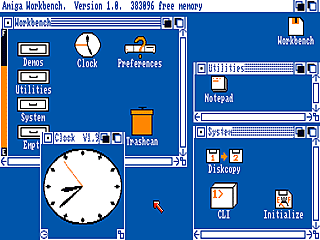
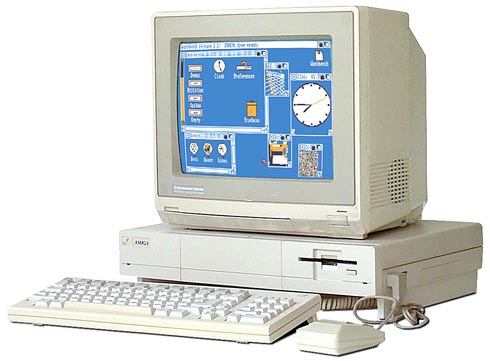
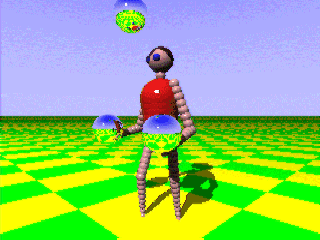 The Amiga 1000 was a quantum leap above any other system out at the time, as it included a 32-bit pre-emptive
multi-tasking GUI (Graphic User Interface), 4 channel stereo sound, 880k 3-1/2 inch floppy disks, and video modes
which provided up to 4096 colors at once. The Amiga can even display multiple screens at different resolutions on a single monitor,
all at the same time.
The Amiga 1000 was a quantum leap above any other system out at the time, as it included a 32-bit pre-emptive
multi-tasking GUI (Graphic User Interface), 4 channel stereo sound, 880k 3-1/2 inch floppy disks, and video modes
which provided up to 4096 colors at once. The Amiga can even display multiple screens at different resolutions on a single monitor,
all at the same time.
